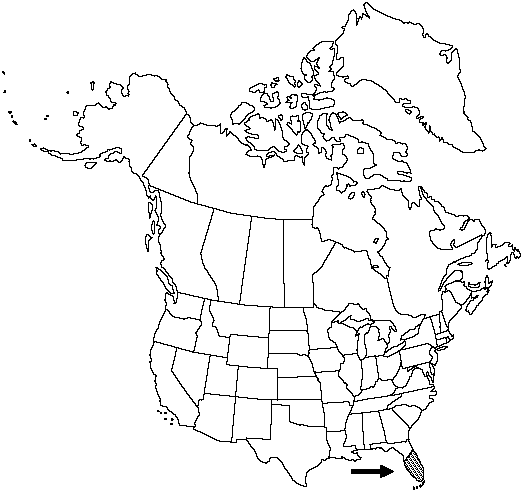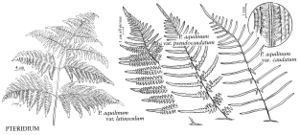Difference between revisions of "Pteridium aquilinum var. caudatum"
Jahrb. Hamburg. Wiss. Anst. Beih. 3: 5. 1897.
FNA>Volume Importer |
FNA>Volume Importer |
||
| Line 8: | Line 8: | ||
}} | }} | ||
|common_names=Lacy bracken | |common_names=Lacy bracken | ||
| − | |basionyms={{Treatment/ID/ | + | |basionyms={{Treatment/ID/Basionym |
|name=Pteris caudata | |name=Pteris caudata | ||
|authority=(Linnaeus) Maxon | |authority=(Linnaeus) Maxon | ||
| + | |publication_title=Sp. Pl. | ||
| + | |publication_place=2: 1075. 1753 | ||
}} | }} | ||
|synonyms={{Treatment/ID/Synonym | |synonyms={{Treatment/ID/Synonym | ||
| Line 52: | Line 54: | ||
|publication year=1897 | |publication year=1897 | ||
|special status= | |special status= | ||
| − | |source xml=https://jpend@bitbucket.org/aafc-mbb/fna-data-curation.git/src/ | + | |source xml=https://jpend@bitbucket.org/aafc-mbb/fna-data-curation.git/src/f6b125a955440c0872999024f038d74684f65921/coarse_grained_fna_xml/V2/V2_511.xml |
|genus=Pteridium | |genus=Pteridium | ||
|species=Pteridium aquilinum | |species=Pteridium aquilinum | ||
Revision as of 18:56, 24 September 2019
Petiole 20–75 cm. Blade broadly ovate to deltate, 2–3-pinnate-pinnatifid, 30–100 × 20–80 cm; blades, rachises, and costae usually densely covered abaxially with abundant, straight, stiff, subappressed to spreading hairs. Pinnae all narrowly to broadly triangular; terminal segment of each pinna ca. 10 times longer than wide, longer ultimate segments several times their width apart, ca. 1–2.5 mm wide. Pinnules at nearly 90° angle to costa; fertile ultimate segments only decurrent, or more decurrent than surcurrent. Outer indusia entire, glabrous.
Habitat: In barrens, pine woodlands, and edges of deciduous woods in strongly acid to circumneutral soil, forming large colonies in exposed sites
Elevation: 0 m
Distribution

Fla., Mexico, West Indies, Bermuda, Central America, South America from Colombia to Peru.
Discussion
In Florida and West Indies material, the abaxial surfaces are quite hairy; in Central American material they are often much less hairy.
Selected References
None.
